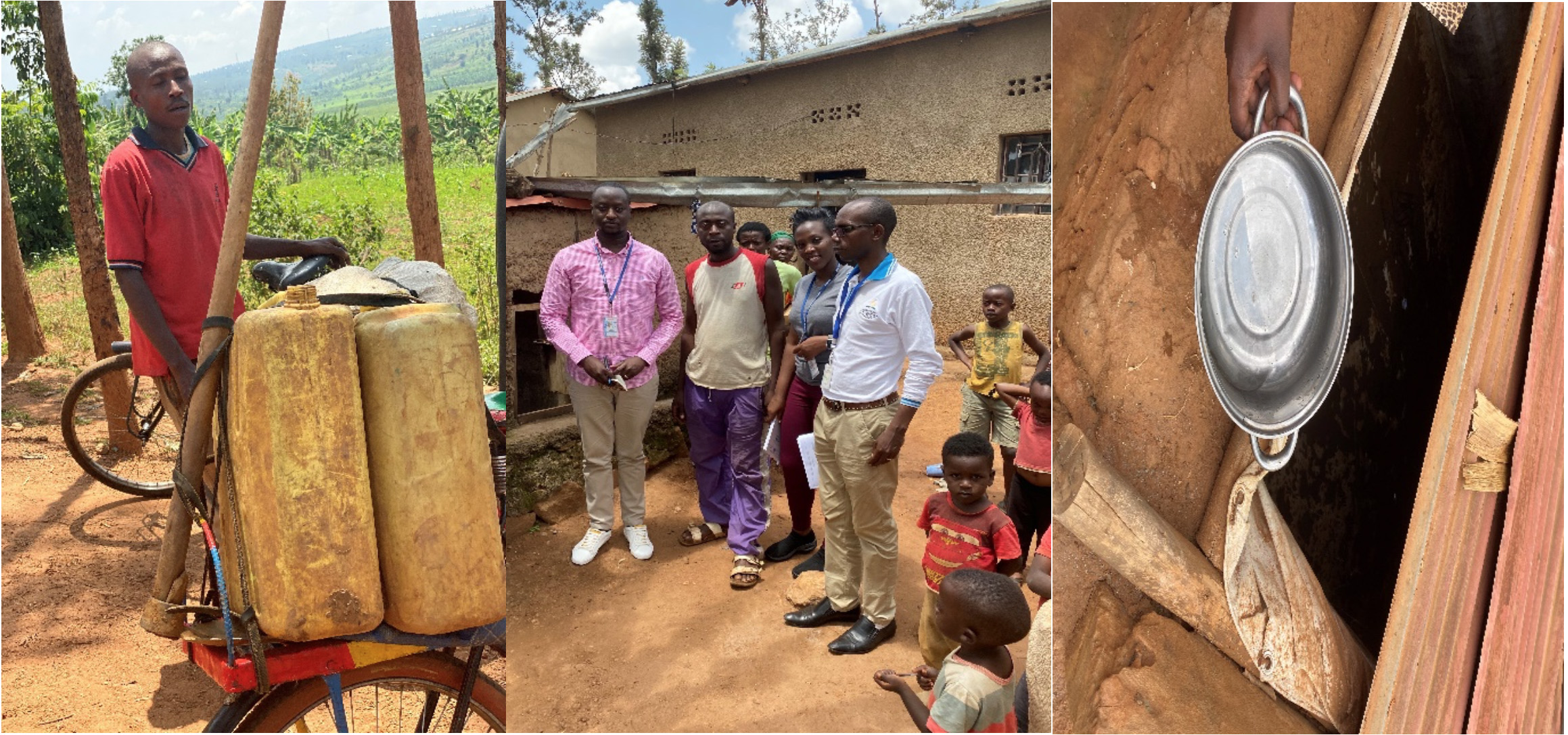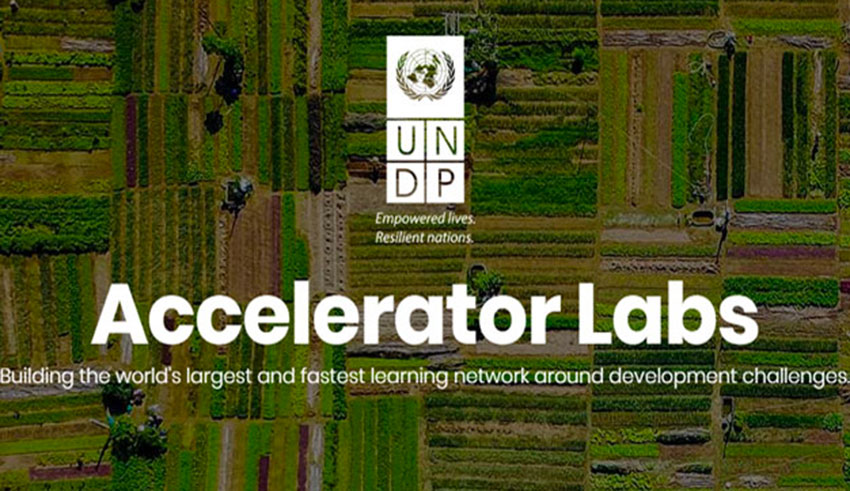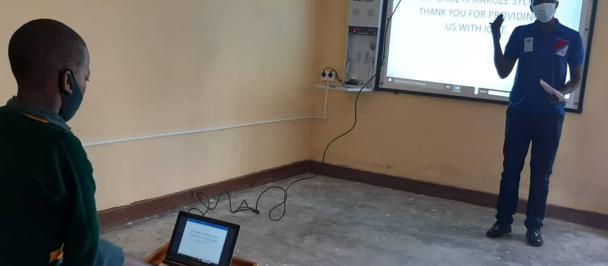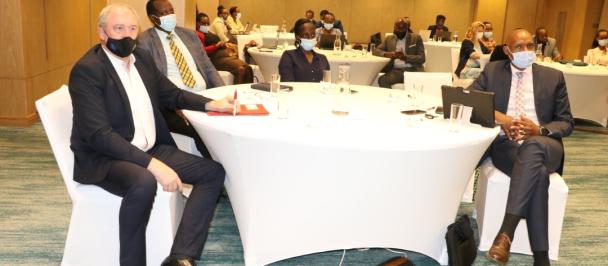Accelerator Labs
By Julio Malikane and Vaster Kanyesigye
Together with our core partners, the State of Qatar and the Federal Republic of Germany, 60 Accelerator Labs serving 78 countries are working together with national and global partners to find radically new approaches that fit the complexity of current development challenges.
The Accelerator Lab in Rwanda set its vision to address poverty issues in the poorest districts of the country, in partnership with the Ministry of Local Government. The journey started by focusing on one component of poverty, access to water, in order to start identifying the pertinent needs and challenges.
What we are working on
Water access reality in developing countries is always a tough challenge associated with poverty and lack of infrastructure and resources. In response to inadequate rural water systems and service quality, Rwanda has set a universal access coverage target of 100% by 2024 in the National Strategy for Transformation 1, the country’s medium-term strategy.
The journey started with a simple ecosystem mapping engaging with key players to understand and learn from their achievements and challenges. Key players were government agencies, NGOs, social enterprises as well as rural local authorities and community representatives.
We found out that the institutional responsibilities are also different between urban and rural areas. In Urban areas, Water and Sanitation Corporation (WASAC) is in charge of water supply with a clear network of pipes. In rural areas, different NGOs support a number of districts and other social enterprises play a tremendous role in providing access to water using donor funds and small-scale technologies. The districts own the infrastructure from NGOs’ support and contract private operators to manage and provide the service to the population. These private operators are regulated by Rwanda Utilities Regulatory Authority (RURA) and work closely with the districts to provide the service in the area of operation.
From the preliminary discussion, we found how access to water challenge has different structures in urban and rural areas. Urban areas were challenged with limited investments which do not correspond with the rapid settlements in the capital city of Kigali and technical or commercial losses. For rural areas, the water infrastructure might be there, but not all residents in the area live within reachable distance. The NGOs like Water Aid, Water for People, Rwanda4Water we met, highlighted the challenge of mindset change of the locals to use and drink water from the built reservoirs that is treated and safe than the spring water used which is not paid for stressing a need for sensitization campaigns on the use of clean and safe water in the local communities.
To tackle these challenges, The UNDP Accelerator Lab in Rwanda, under the Leave No One Behind principle is identifying, exploring and testing innovative ways to accelerate the SDGs progress and development process using local solutions, together with the Ministry of Local Government (MINALOC).
Solution Mapping to Find Community Led Solutions
The team then spent three days in the field, solution mapping. Solution mapping is a powerful tool based on ethnography research methods. We go to the field to look for solutions that the communities and local households came up with, for themselves. We put on lenses of genuine curiosity, and observed like a safari.
For our first blog, we will focus on Bugesera district in the eastern province where we went for a solution safari and solution mapping in Mwogo sector for a day. Bugesera is known to have long dry seasons and faces drought and water access issues.

Our solution safari journey started from the district office, where we joined the district water and sanitation expert who appreciated UNDP Accelerator Lab looking into the access to water challenge as it has been a big challenge for the Locals and was expectant of our experiments/outcome. We went to the deepest rural Mwogo sector where we experienced different levels of solutions to obtain access to water like the rain water storage facilities made out of simple and easy means. The Locals get pipes made of metal sheets that are put at the edges of their houses and then connected to the facilities that are built next to these houses. Holes are dug underground, put stones and then cover with a sheet. These a built like a house from mud or bricks, then they put iron sheets as the roof and a window or opening on the roof they use to draw water. This opening is usually closed to protect the water from dirt or children playing from there where they could even drown.
Solutions were of different sizes and most of them were built by the government and development partners such as NGOs and/or in collaboration between the two key players that is Districts from their budgets and NGOs mentioned above operating in different districts. These were big water treatment plants with distribution channels that are contracted to Private operators and locals pay (20 RWF/18$ for a 20-liter jerrycan for piped water and 8 RWF/6$ for gravitational water) However, our main interest was to focus on locally built solutions by the locals.
Our journey brought many surprises. Some community innovators built huge rain water harvesting tanks in their backyards by using local materials such as stones, bricks, metal sheets and other available locally made materials to build rain water harvest systems. These were mostly initiatives made by the individuals who let their neighbors fetch water in dry seasons for free. The water in their storage facilities takes a minimum of 3 months per family if not shared and if shared it can take 1 month. This depends on the storage capacity of the facilities which ranged from 2,000 liters – 6,000 liters. The Local innovators requested us to see how their initiatives can be improved and scaled up to reach many people in their sector who are not in position to get water or even pay from the water treatment plants. We also encountered local entrepreneurs, who were digging up marshlands to collect water into tanks, and carrying them uphill with a bicycle. There seems to be a locally working market around these tanks for domestic use water.

Accelerator Lab team on the field in rural erea
It is clear there is a will from the community to contribute in finding solutions to these problems. These innovation costs range between 50,000 RWF ($53) to 400,000 RWF ($430) and uses iron sheets to collect rain water from the roof and store the water in a well-built water storage. It is shown to be an affordable, effective and efficient way to get access to water in rural areas.
Get Involved
How does UNDP Rwanda Accelerator Lab contribute to the 2024 universal water access target? These local solutions are efficient and could play a big role in supplying water to Rwanda communities. Government investments and funds from NGOs are not sufficient, nor the single solution; These new community approaches can play a big role if well designed and implemented with support from the regulator, policymakers and all stakeholders. With the right approach and support, the community members with their limited resources can contribute in terms of human capacity, funds and also source of inspiration.
As the Accelerator Lab, the hypothesis is that with the right policy and leveraging support, these local innovators can better scale their own solutions to reduce poverty and related issues in the communities. This might require a policy change, technological support, and crowding in different players that are already operating in the ecosystem. We will try to build the first portfolio of experiments to test how small local innovative solutions can be scaled up, not by piloting the exact same water tanks, but rather by seeking ways to leverage and support self-solution seekers.
The stakeholders and key players in the water sector in Rwanda can accelerate the 2024 target by influencing policies, implementation using local solutions, new approaches to water infrastructure and management of the water resources. There is an opportunity to raise awareness in rural communities and also promote self-ownership, behavior change and accountability to effectively implement the community approach to water access. We are open to partners that can work together to further experiment together with the communities.

 Locations
Locations

